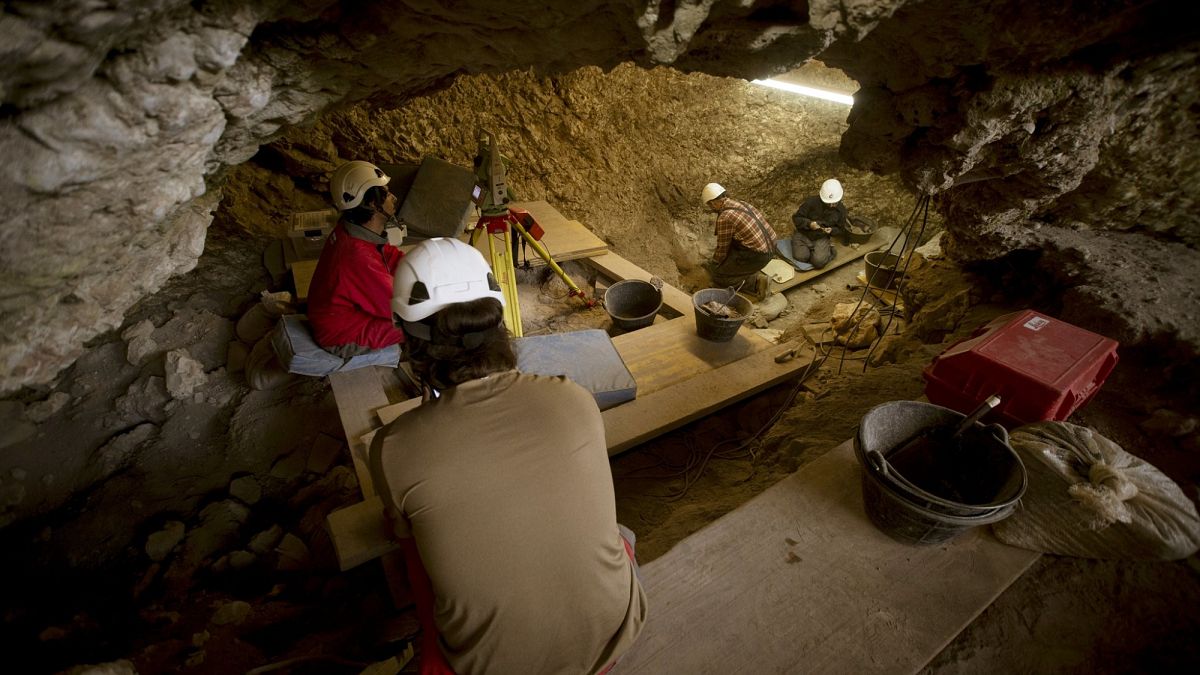The hills of Atapuerca in Burgos, Spain, have long been a treasure trove for scientists. However, their latest revelation pushes the boundaries of what we thought we knew about our prehistoric past.
Dating back roughly 5,700 years, skeletal remains found in El Mirador cave bear chilling signs of cannibalism: precise cut marks, controlled burning, evidence of cooking – even human bite marks.
According to Antonio Rodríguez-Hidalgo, researcher at the Institute of Archaeology-Mérida (IAM-CSIC) and co-author of the study published in Scientific Reports, while recorded examples of prehistoric cannibalism are “relatively few,” in Neolithic Iberia the practice was “more frequent than it might seem” and “integrated into the culture” of the time.
Eleven victims of “extreme exploitation”
The discovery includes the remains of 11 individuals – children among them – subjected to what experts describe as “extreme exploitation” of the bodies.
One haunting example: a child’s femur, deliberately struck to release the marrow, revealing not just brutality, but skill.
Researchers believe the massacre was an episode of war cannibalism, far more than a simple act of killing. For our ancestors, this was about erasing an enemy from both the physical and spiritual realms. Consuming the flesh was believed to destroy the soul entirely, eliminating any trace of the adversary.
The fact that all 11 died at once rules out long-term funerary rites, and with no signs of famine or harsh climate, survival cannibalism is off the table.
“If you’re eating someone from your own group, you usually take only what’s needed to survive,” Rodríguez-Hidalgo explains
Instead, the exhaustive use of the bodies found at El Mirador suggests that the victims did not belong to the same social group as their aggressors, but were enemies who had to be completely obliterated.
This discovery challenges the long-held image of Neolithic societies as peaceful farming communities, demonstrating that they also “resolved conflicts violently”.
However, as the researcher points out, this does not imply that human beings are genetically predisposed to war: “It’s not that war is in our genes, but rather that what we usually do, and succeed in doing, is to avoid it with tools such as diplomacy or politics.”
Atapuerca: The capital of cannibalism
The Atapuerca site has established itself over the last three decades as the world epicentre for the study of prehistoric cannibalism. As Rodríguez-Hidalgo jokes: “Atapuerca is as if it were the capital of cannibalism” on a scientific level.
The findings related to anthropophagy at this site span an extraordinary time span. The earliest discovery dates back almost a million years, constituting the first documented case of cannibalism in the history of human evolution.
More recently, just over a week ago, the same research team announced the discovery of evidence of infant anthropophagy from over 850,000 years ago. Cases have also been documented from the Bronze Age, some 4,000 years ago.
Atapuerca’s exceptional productivity in this field of study is no coincidence. Much of this success lies in the work of a dedicated team led by Palmira Saladié at the Catalan Institute of Human Palaeoecology and Social Evolution (IPHES), whose expertise allows them to spot subtle bone markings other researchers might miss.
Half a century of revolutionary discoveries
The modern history of Atapuerca began long before it became a world reference in palaeoanthropology. In 1863, Felipe de Ariño and Ramón Inclán published the discovery of prehistoric human remains in Cueva Ciega, marking the first signs of the archaeological wealth of the area. However, it would not be until more than a century later that the site’s modern scientific chapter would truly begin.
The turning point came in 1976, when Emiliano Aguirre began to work in the Sierra de Atapuerca, where he conceived the project as a multidisciplinary quarry of researchers with a long-term mission. That same year, the speleology group led by Trinidad Torres undertook excavations in search of bear fossils, and what they found was a remarkably complete human jawbone in the Sima de los Huesos.
The first discovery of a human fossil was made in 1976 by Trinidad Torres, who at that time was doing her doctoral thesis on prehistoric bears, and it was then that Emiliano Aguirre took on the challenge of forming a research team.
The 1990s marked a turning point for Atapuerca. In 1992, the discovery of human remains in the Sima de los Huesos site brought the area major scientific and public attention. Two years later, archaeologists unearthed fossils over 900,000 years old that belonged to a newly identified species, Homo antecessor. This find transformed our understanding of human evolution in Europe, revealing a group of hominids that lived before both Neanderthals and modern humans.
International recognition soon followed. In 2000, UNESCO declared the Atapuerca sites a World Heritage Site, consolidating their status as one of the most important archaeological sites in the world. Emiliano Aguirre was distinguished with the Prince of Asturias Award for Technical and Scientific Research in 1998, in recognition of decades of pioneering work.
Remarkable discoveries have continued into the 21st century. During the 2022 excavation season, researchers uncovered a facial fragment and part of a jawbone from Homo affinis erectus, dated to around 1.2 million years ago – the oldest human remains ever found at the site.

